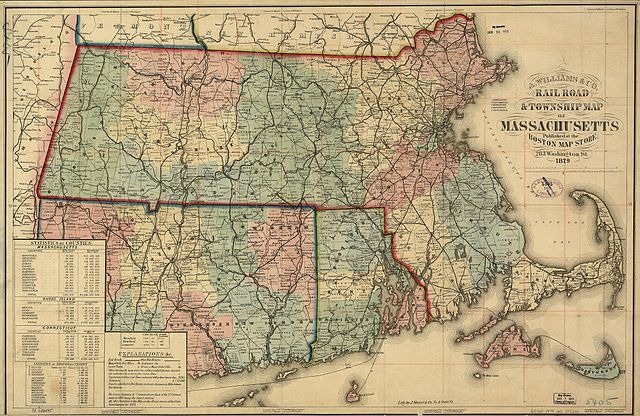
Figure 1: A map of the Massachusetts railroad network in 1879. (“File:1879″, 1879)
As a medium, networks are not contained in any particular technology. However, digital technologies have had a significant effect on networks and their importance to communication practices. Manuel Castells (2000) has stated bluntly that digitality is what makes networks a viable alternative to forms of organization such as hierarchies. Here I quote him at length:
while networks are an old form of organization in the human experience, digital networking technologies, characteristic of the Information Age, powered social and organizational networks in ways that allowed their endless expansion and reconfiguration, overcoming the traditional limitations of networking forms of organization to manage complexity beyond a certain size of the network. (p. xviii)
Networks are not new to human experience. As long as people have existed together in society, networks of relations have existed. Where unassisted social networks are limited in their size and complexity due to the difficulty of maintaining numerous significant social relationships—without assistance, a person can only have and maintain relations with a limited number of people (boyd, 2008, p. 16)—digital networking technologies allow for a dramatic increase in the level of complexity that networks can support, represented either by the number of nodes in the network or the density of their interactions. This has led to the increased prominence of networks in society.
Of course, digital technologies are the not the only prerequisite for increasing the complexity of networks. Armand Mattelart (2000) has argued persuasively that the effects of technological communication networks on managing network size and complexity arose as early as the development of railroads, the telegraph, and highways (Fig. 1). In this case, the management of complexity beyond the individual is not necessarily a unique feature of digital networking. However, the diffusion of digital networking in society has served as an inflection point, a moment that allowed networks of all kinds to “overcom[e]” their “traditional limitations” such that they could “manage complexity” in ways that were previously impossible (Castells, 2000, p. xviii). This increased complexity has allowed networking as a form of organization to compete with traditional sources of hierarchical power, for example, by enabling networked technologies for determining quality in web pages to out-perform top down, hierarchical quality measures (Brin & Page, 1998).
“expansion and reconfiguration”
To better understand the effects of digital technologies on networks, we can compare digital and pre-digital networks. Where Mattelart (2000) has shown that pre-digital networks both allow for and increase the complexity of individual networks, digital technologies have enabled these networks to easily grow and alter themselves in ways that were unavailable to those pre-digital networks. Although pre-digital networks like the railroad and telegraph systems were also expandable and reconfigurable, digital technologies greatly lower the resource costs necessary for these activities. Adding a server to a network array or rewriting a network program to allow for new forms of interactivity is not as resource-intensive as adding a railway connection between two cities (Fig. 1) or physically stringing telegraph wire between two contact points.
By lessening the difficulty of network expansion and reconfiguration, digital technologies did more than simply increase the scope and complexity of networks. Where tools like graph analysis could investigate network effects in pre-digital networks, digital networks allow for network actors to directly manipulate these network effects, testing outcomes and changing the structure of the network on the fly in reaction to those outcomes. The focus on expansion and reconfiguration does not distract from the power differences that influence the creation of networks. Rather, it draws attention to them.
In short, the speed of expansion and reconfiguration in digital networks allowed these networks—and network structures more generally—to compete with, and sometimes outperform, hierarchies and other forms of organization. Significantly, networks bleed outside of their technological boundaries such that the logic of networks flows beyond technological spaces to spaces that are not physically connected to a particular network. As Castells (2000) put it, the digitality of the Internet exceeds the domain of the technological, for the “networking logic epitomized by the Internet [has become] applicable to every domain of activity, to every context, and to every location that could be electronically connected” (p. 52).
The free expansion and reconfiguration of digital networks like the Internet is not a given; rather, the particular features of the Internet that allow for the “endless expansion and reconfiguration” of online spaces are the result of historical developments and are subject to change (cf. Zittrain, 2008). However, the potential for such freedom results in particular effects on power relations within networks, and Castells’s (2000) theory of network* power provides useful insights into how digital technologies influence networked relations, particularly network-making power.
